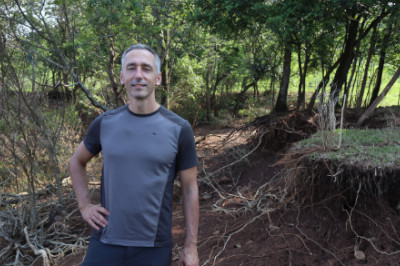What does the "Last Neanderthals" project investigate in detail?
The project aims to study the last groups of Neanderthals and the earliest traces of Homo sapiens in key regions of Eastern and Southeastern Europe, as well as Central and Western Asia. Its goal is to understand the origins of cultural diversity and possible interactions between the two groups, including whether they had contact, exchanges, or competition. Additionally, the project examines climatic and environmental conditions of the era, exploring the role of sudden climate shifts or volcanic eruptions in the Neanderthals' extinction. Ultimately, it seeks an integrated understanding of why one species disappeared while the other thrived.
With which types of techniques is it possible to conduct these studies?
To better understand demographic dynamics and the biological and cultural interactions between Sapiens and Neanderthals, advanced techniques such as ancient DNA analysis and precise artefact dating are essential.
What are the elements that make this research groundbreaking in terms of content or methodology?
The "Last Neanderthals" project stands out for its interdisciplinary approach, geographical focus, and use of cutting-edge methods. As an ERC Synergy project, it unites three Principal Investigators specializing in paleoenvironment, Palaeolithic culture, and palaeoanthropology. This collaborative expertise enables a comprehensive reconstruction of events between 60,000 and 40,000 years ago. Unlike earlier studies focused on the periphery of Neanderthal ranges, this project targets their presence in Central/Western Asia and Eastern/Southeastern Europe. Advanced methods such as speleothem, pollen, tephra analyses, and studies of lithic tools are used to reconstruct the paleoenvironment. A key aspect of the research involves identifying new human remains using palaeoproteomic analysis and sediment DNA to investigate Neanderthal extinction and their interactions with Homo sapiens.
Where does the research take place?
The research involves archaeological excavations and surveys in strategically significant areas across Eastern and Southeastern Europe and Central and Western Asia. Beyond Italy, participating countries include Albania, Croatia, the Czech Republic, Hungary, Turkey, Israel, Iraqi Kurdistan, Azerbaijan, Iran, and Uzbekistan. Around 30 key Palaeolithic archaeological sites will be investigated to uncover insights into Neanderthal life and the earliest presence of Homo sapiens. These field studies will be paired with cutting-edge laboratory analyses, providing a deeper understanding of the materials unearthed during excavations. Field investigations are complemented by advanced laboratory research, primarily conducted at the BONES Lab at the Department of Cultural Heritage. In addition to its well-established sections dedicated to Osteoarchaeology, Histology, Virtual Anthropology, and Microscopy, the BONES Lab will inaugurate a cutting-edge facility focused on palaeoproteomics—a state-of-the-art discipline for analysing ancient biological remains.
What scientific questions does this research address?
The "Last Neanderthals" project explores the reasons behind the extinction of other human groups, such as Neanderthals and Denisovans, who inhabited the Earth until approximately 40,000 years ago. It seeks to answer the compelling question of why Homo sapiens prevailed while these other groups disappeared. In addition to unravelling this evolutionary mystery, the research will provide new tools for studying both natural and human-induced climate changes, enhancing our understanding of ancient human environments and today's climate challenges. The project also sheds light on interbreeding events between Homo sapiens and other human species, revealing their impact on physiology, immune systems, health, and adaptability. Another important aim is to strengthen cultural heritage by fostering research and promoting archaeological resources in emerging countries where significant discoveries are being made.
How did you feel upon learning you had won the ERC award, and what does this recognition mean for your research?
It was the morning of 12 October 2023. I was discussing research with my team outside my office when I noticed an email from the European Research Council. Seeing the sender, I froze. Upon reading that we had been awarded the ERC Synergy grant, I was overwhelmed with joy and disbelief. Securing an ERC is notoriously difficult, and I had prepared myself for a resubmission. Winning this ERC for the second time is a monumental milestone for my career and, most importantly, for the future of the BONES Lab at the Department of Cultural Heritage. This funding allows us to consolidate and expand our activities, pursue the research I am most passionate about, and create an inspiring international environment for young researchers and students to grow both scientifically and personally.
RicERCatori in evidenza is the column dedicated to the University of Bologna's cutting-edge research funded by the European Research Council-ERC and its protagonists.

